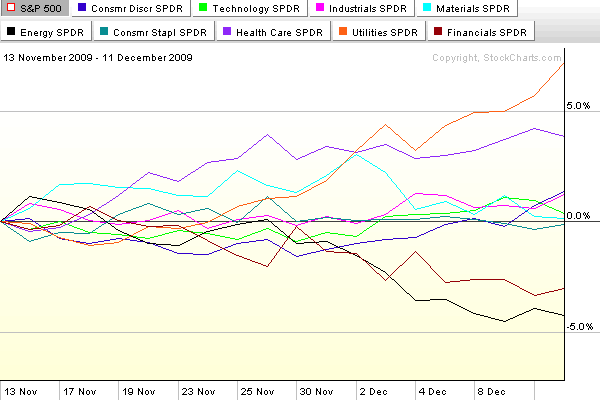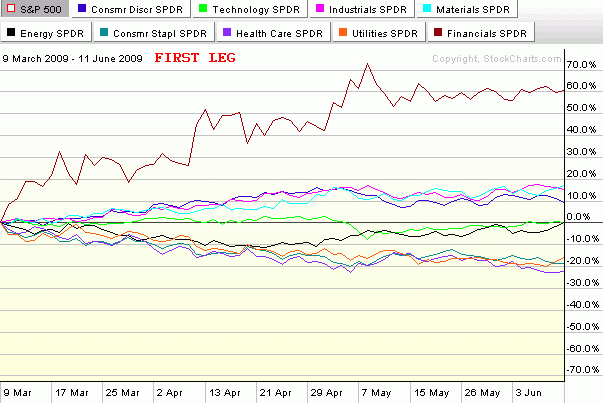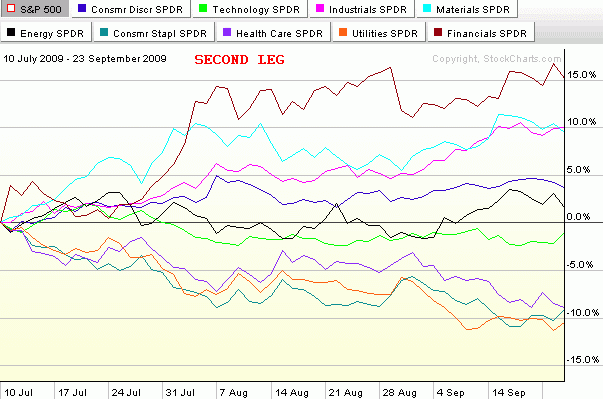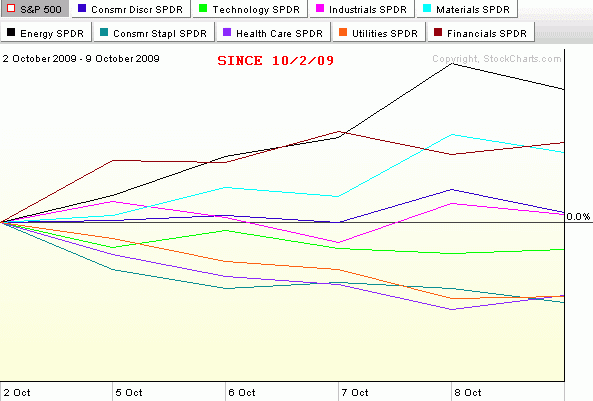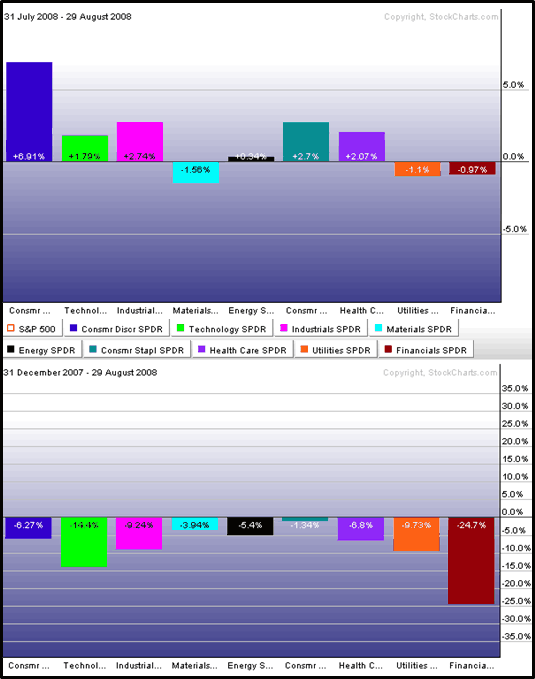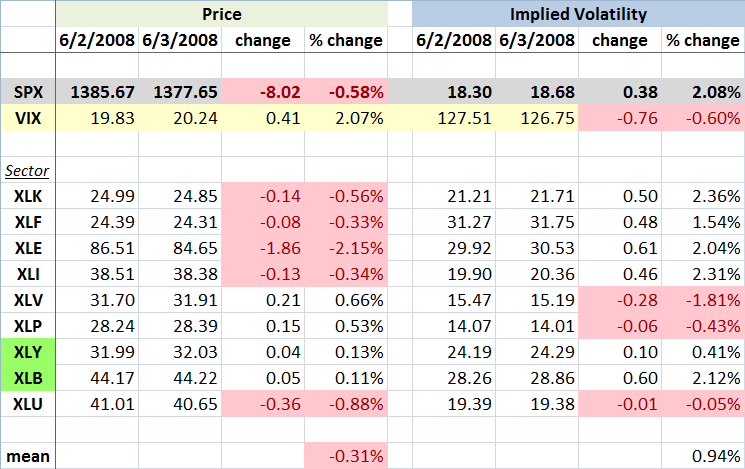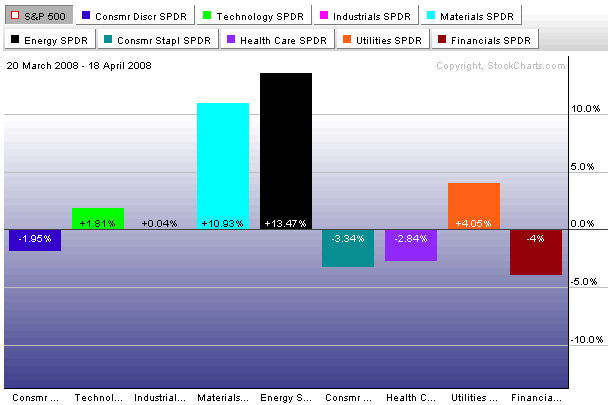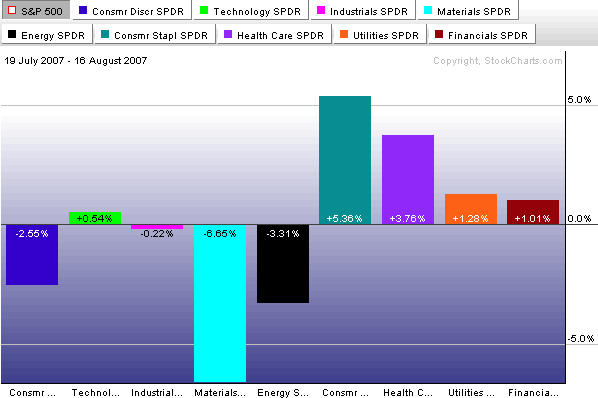Chart of the Week: Sector Winners and Losers
While there was a lot going on in the sector space during the rally from October to April and the pullback earlier in the month, I have yet to see any sort of detailed explanation of what happened during these two periods.
This week’s chart of the week below attempts to bridge this gap, with a four-chart comparison of the bull move from October 4, 2011 to April 2, 2012 as well as the bear pullback from April 2 to April 10, 2012. The top two charts cover the bull move, with the left chart capturing absolute sector performance and the right chart capturing sector performance relative to the changes in the S&P 500 index as a whole. The bottom two charts also have absolute sector performance on the left and relative sector performance on the right, but this time during the April 2-10 pullback.
The absolute data show that all sectors moved up during the bull move and fell during the bear move. The relative data allow for a more nuanced analysis that shows financials (XLF) were the main engine behind the bull move and also the largest contributor to the pullback. While financials shared some of the credit with consumer discretionary stocks (XLY), industrials (XLI) and technology (XLK) on the way up, it was materials (XLB), energy (XLE) and industrials that helped to pull the broader index down. Only two sectors have outperformed the S&P 500 index on the way up and on the way down: technology and consumer discretionary stocks. Conversely, energy has been the only laggard in both directions.
While not reflected in these charts, in the three weeks since the April 10th bottom, consumer discretionary, materials and industrials have been the biggest contributors to bullish moves. Interestingly, technology has now flipped to being the biggest drag on performance.
One could make a fairly good case that the ability of the S&P 500 index to make a run at 1500 (take a bow, James Altucher) will in large part be a function of the degree to which technology returns to a leadership role.
Related posts:
- Chart of the Week: Looking for Sector Leadership
- Chart of the Week: A Month of New Sector Leadership
- Chart of the Week: Four Key Sectors Struggle
- Three Pivotal Sectors: Financials; Homebuilders; and Consumer Discretionary
- Sector Performance in the Last Two Bull Moves
- Market 2.0
- August Sector Recap
- Bullish Case Losing Traction
- The Energy and Materials Rally
- Financials and Real Estate Power Yesterday’s Rally
- What Fell and What’s Bouncing
- What’s Working? A Sector Overview

[source(s): StockCharts.com]
Disclosure(s): long XLY at time of writing

